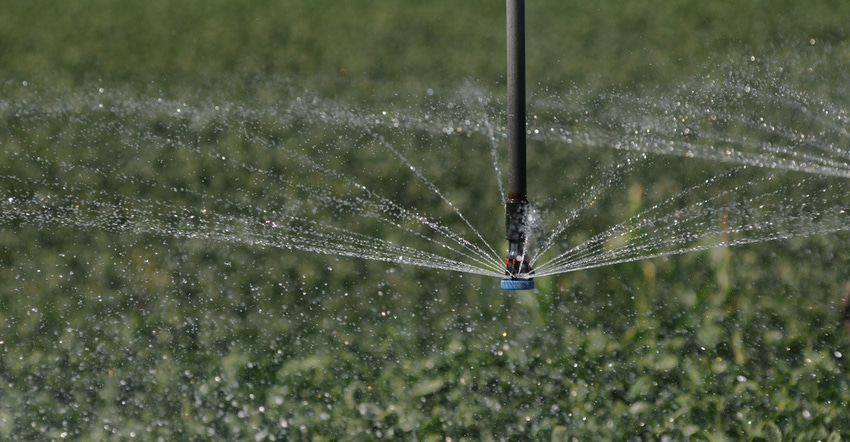August 16, 2021

Across Kansas, farmers wrestle with the quandary of when to water thirsty crops — and how much of the precious resource they should use.
“What it boils down to,” says Jonathan Aguilar, a Kansas State University irrigation engineer, “is how to manage the water I have, and what kind of feedback I should look at in order to make that decision.”
Aguilar is based in the Southwest Research-Extension office in Garden City, a region that receives as little as 18 inches of rainfall per year, or about half that received in the eastern part of Kansas. Many crop fields in western Kansas are fed by water that farmers draw from the Ogallala Aquifer.
Yet, as the mighty Ogallala dries up, farmers are challenged to figure out how to use what they’re legally entitled to most efficiently, and still grow healthy crops. Aguilar spoke on that topic during a recent precision agriculture conference in Manhattan.
“What I told people is that there are only three general categories of feedback that producers should use when determining when and how much to irrigate,” Aguilar says. “They can base their decision on weather, soil or on the plant itself.”
Only half-jokingly, he adds: “Never, never base it on your neighbor. Because there are still farmers that base irrigation decisions on what their neighbor is doing.”
Technology tools
Aguilar says that infrared thermometers and dendrometers are two technologies that are being tested by agricultural scientists to help producers receive feedback from their crops. Both are intended to measure stress on the plant, indicating a need for the farmer to schedule irrigation.
Feedback on Kansas weather is available 24 hours a day from the Kansas Mesonet, located at K-State. The statewide network of weather stations collects data on evapotranspiration, as well as other related weather benchmarks.
Aguilar calls soil moisture sensors “a really aggressive market — and I think there is value in using them. They are really user-friendly for farmers; with a subscription, it allows you to access information on soil moisture on their phone.”
“In terms of technology, being able to use that data almost instantly is very impressive,” he adds.
While soil moisture sensors are highly favored for their ease of use and reliability, Aguilar cautions that they’re not always going to give producers a correct reading. One sensor in one part of the field may not be representative of the entire field; and if a sensor is not installed properly, it could give a false reading.
To illustrate, Aguilar pulls out a tennis ball.
“Think of this tennis ball as a volume of soil that you are going to measure in relation to a field that is 125 acres,” he says. “You get a reading, and then you are going to make a decision out of that tennis ball volume for the big field. That said, you better install your sensor correctly, and you better make sure that the sensor is giving you the exact number for the particular sample in the field.”
KanSched software
To aid in producer’s decisions, Aguilar says K-State continues to develop and improve upon a computer software program commonly known as KanSched. The program is designed to monitor the root zone soil profile water balance, and schedule irrigation events on a field using evapotranspiration data. KanSched can also be used to monitor the soil profile water content of nonirrigated fields.
“Technology is part of management, but management techniques are a big help already in reducing water use,” Aguilar says. “Many farmers, if they had a chance, would turn the water on and let it run most days and most of the time. But now they are more mindful of when to turn it on and when to turn it off. They are looking at their systems more intently than they have before. And they have learned a lot.”
Source: Kansas State Research and Extension is solely responsible for the information provided and is wholly owned by the source. Informa Business Media and all its subsidiaries are not responsible for any of the content contained in this information asset.
You May Also Like




